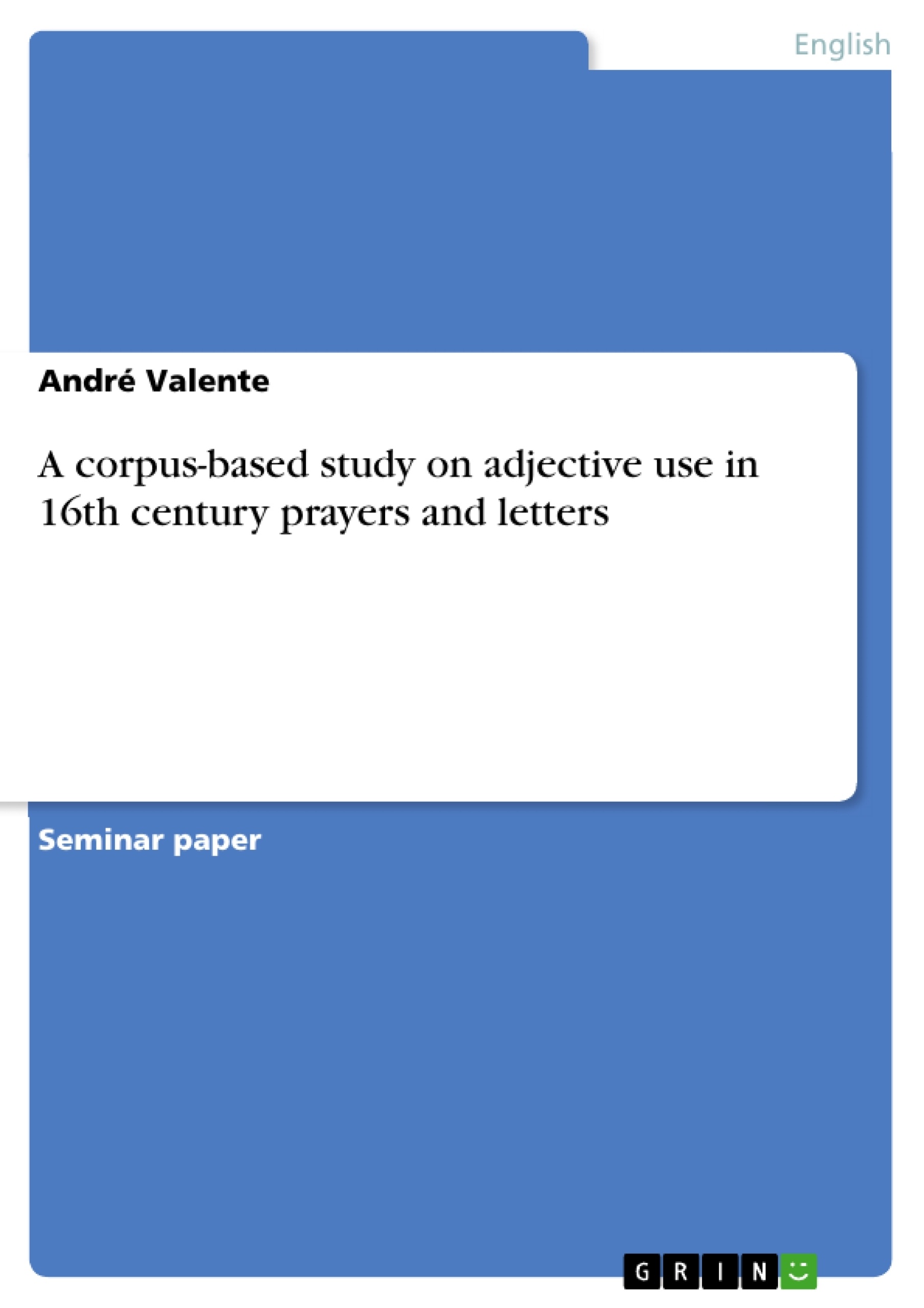At first sight, prayers and letters might appear to be completely different genres. In fact, they show similarities, which make them worth comparing. A typical feature of prayers and letters is “the high involvement of the addressor with the addressee and the fact that the addressor performs speech acts which directly aim at the addressee” (Kohnen forthcoming b: 5). One can say that the basic communicative setting in both genres is similar.
This study will provide a corpus-based linguistic description and comparison of adjective use in prayers, private letters and official letters from the 16th century. Besides the analysis of the individual text types, there will be an analysis of different functional text sections within these three text types.
The linguistic analysis will be on the level of morphology, semantics and syntax. The morphological analysis concentrates on the method and distribution of comparison. In the semantic analysis, the adjectives will be grouped into semantic categories and it will be looked at the distribution of these categories in different text sections. Concerning syntactic aspects, there are two aims. Firstly, it will be distinguished between attributive, predicative and postpositive adjectives. The second aim is to look at occurrences, where more than one adjective modifies a noun phrase and additionally, the composition of these constructions will be considered with regard to the semantic categories the adjectives belong to.
The overall aim of this paper is to find out differences and similarities in these genres and text sections with regard to adjective use and to look at the effect they have on the language.
Kohnen writes concerning prayers that except for the work by Crystal and Davy, Investigating English Style from 1969, “there are hardly any linguistic descriptions, leave alone corpus-based studies” (forthcoming b: 1). On the other hand, there are many studies on letters from the Early Modern English Period, and it would go beyond the scope of this introduction to give an overview of the current status of research. However, what can be said is that there have not been quantitative studies on adjectives, providing a detailed description of the above mentioned text types and different functional text sections.
Contents:
1. Introduction
2. Theoretical Background
2.1 Grammatical aspects of adjectives
2.1.1 Morphological aspects
2.1.2 Semantic aspects
2.1.3 Syntactic aspects
2.2 Background information on Prayers
2.3 Background information on letters
3. Linguistic analysis and discussion of the findings
3.1 Analysis of the prayer corpus
3.1.1 Morphology
3.1.2 Semantics
3.1.3 Syntax
3.2 Analysis of the private letter corpus
3.2.1 Morphology
3.2.2 Semantics
3.2.3 Syntax
3.3 Analysis of the official letter corpus
3.3.1 Morphology
3.3.2 Semantics
3.3.3 Syntax
4. Conclusion
5. Appendix
6. References



